From their first introduction on The Next Generation to later their central role on Deep Space Nine, the Cardassians were never just “plain and simple”.
In the Season 4 episode of Enterprise titled “The Forge”, there is a wonderfully insightful conversation between the Vulcan Ambassador to Earth, Soval and Admiral Maxwell Forrest of Earth’s Starfleet.
Soval: “We don’t know what to do about Humans. Of all the species we’ve made contact with, yours is the only one we can’t define. You have the arrogance of Andorians, the stubborn pride of Tellarites. One moment you’re as driven by your emotions as Klingons, and the next you confound us by suddenly embracing logic!”
Forrest: “I’m sure those qualities are found in every species.”
Soval: “Not in such confusing abundance.”
As much as those qualities define humanity, they also define the Cardassians as well, who are arguably the most compelling alien race in Star Trek because they serve such a striking parallel to much of human history, both past and present. And in doing so, they act as a cautionary tale about the dangers of our own species’ internal demons.
When you consider the other main alien races within the Trek universe, they don’t compare to the type of consistent characterization and development that the Cardassians received. The Andorians and the Tellarites, first seen in The Original Series episode “Journey to Babel”, are not seen again until Enterprise (if we’re not counting The Animated Series), and even then, we as the audience don’t know that much about them outside of a handful of admittedly wonderful episodes. The Vulcans, surprisingly enough, also fall into this paradigm. Although a Vulcan is the most iconic alien being in all of Trek (in the form of Spock), outside of select scenes from the movies and a handful of episodes from The Original Series and Voyager, the audience doesn’t learn that much about Vulcan culture or society until Enterprise. And although we do learn a lot about Vulcans from that series, particularly how they used to be very much like humans in the past, the fact that they’re in a more evolved and advanced state from humanity takes away from their ability to act as a parallel to our lives now. The Romulans, like their Vulcan cousins, are often referenced in Trek canon, but from what we see of them in terms of characterization and development is often more one-dimensional in nature. The Klingons, probably the most well-known of the Trek races, certainly don’t suffer from a lack of screen time, on television or in the movies. But with a few exceptions, they are also one-note and archetypical in characterization, especially in The Next Generation era. The Bajorans, on the other hand, do not fall into this paradigm. First introduced in TNG and later in Deep Space Nine, they are admittedly well-drawn both as a culture and as a society, particularly regarding their faith and spirituality. But speaking for myself, the Cardassians are more compelling due to their unique and tragic narrative denouement, something that the Bajorans lack. Cardassia ultimately endures a fate that is akin to the greatest of Greek tragedies and in doing so, truly acts as a cautionary tale for all of humanity.
A Cardassian delegation aboard the Enterprise-D
One of the first things that jump out to long-time fans of the franchise is the fact that the Cardassians didn’t have an origin based upon The Original Series. They were the relative newcomers to the galactic neighborhood, having been introduced in the third season TNG episode “The Wounded”. From their first portrayal here to their eventual role as the primary antagonists in Deep Space Nine, the Cardassians were conceived with the idea that they were going to be more three-dimensional than previous alien races. The episode’s director, Chip Chalmers noted “We introduced a new enemy that’s finally able to speak on the level of Picard. They’re not grunting, they’re not giggling, they’re not mutes or all-knowing entities. Here are the Cardassians who also graduated first in their class and they’re able to carry on highly intelligent conversations with Picard, but they’re sinister as hell. It was fun to introduce a whole new alien race.” In this episode, we see the critical seeds of the more well-known aspects of the Cardassian mindset being planted: their militarism, their inherent suspicion of outsiders, and their penchant for duplicitousness and strategic maneuvering. Indeed, for Cardassia, the only instrument that can ensure order and security is a strong Nation State bound by common purpose, force of arms, and an unwavering sense of right and wrong that can ward off its enemies, both internal and external. In order to ensure the State’s survival, two institutions were key in Cardassian society: the military in the form of the Central Command and the intelligence and internal security apparatus in the form of the Obsidian Order.
Gul Dukat of the Central Command and Garak, formerly of the Obsidian Order
However, it is important to remember that although a strong militaristic ethos has always infused Cardassian culture, the entire race is not uniformly depicted as such. A number of portrayals do indeed add much needed texture and nuance in this regard. For example, in the season three DS9 episode titled “Destiny”, there is a marvelous portrayal of Cardassians that have other career paths than ones that aspire to be a glinn, gul, or even legate in the Central Command. As civilian scientists, Ulani Bejor and Gilora Rejal demonstrated that not every Cardassian necessarily desired to join the military or intelligence ranks. Furthermore, as female members of their race, they were able to provide texture and nuance about larger Cardassian gender dynamics, most notably around the idea that since females were perceived to be smarter than their male counterparts, they would naturally gravitate towards the sciences, whereas the males would often be inclined towards “less” intellectually rigorous pursuits such as the military and politics. It’s a shame that the DS9 writers didn’t carry this fascinating idea forward because it serves as a reverse mirror of our own society and how women are still underrepresented in STEM (science, technology, engineering, and mathematics) fields today. It was even shown that consummate career military officers, such as Gul Dukat and Gul Madred, also had interests and passions for art, archaeology, philosophy, history, and other intellectual pursuits. There existed a Cardassian Institute for Art and an entire art movement on the homeworld called “The Valonnan School” that ostensibly emphasized impressionistic art. There were entire genres of diverse Cardassian literature that ranged from serialistic poetry to repetitive epics and enigma tales. And perhaps most telling, there even existed a Cardassian underground dissident movement, comprised of academics, scholars, young people, and other idealists, who opposed the stranglehold that the Central Command and the Obsidian Order had on Cardassian society and sought to restore the power of the civilian-led Detapa Council.
Two female Cardassian scientists, Ulani Bejor and Gilora Rejal
Through nearly all of these unique manifestations of Cardassian culture and thought, there is a singular theme that runs through them: the idea that individual needs are subordinate to the collective good of Cardassia. At the heart of this idea to promote the collective good lies the family. Indeed, in the second season DS9 episode “Cardassians”, Kotan Pa’Dar noted that “We care for our parents and our children with equal devotion. In some households, four generations eat at the same table. Family is everything.” Thus, it should come as no surprise that someone such as Elim Garak would consider “The Never Ending Sacrifice”, a literary epic focusing on seven generations of citizens devoted in service to the State, to be the “finest Cardassian novel ever written”. This creed is in essence a variation on the theme that Spock espoused in “The Wrath of Khan” and would later become an informal ethos for the Federation, and by extension humanity: “The needs of the many outweigh the needs of the few”. But as evidenced by humanity’s own history, such an ethos can be manipulated and perverted to justify unspeakable crimes and atrocities and Cardassian history is no exception.
A striking example of how this desire for the collective good can be used for terrible ends is witnessing how the Cardassian judicial system operates. In the second season DS9 two-part episode “The Maquis”, Dukat lays out to Commander Sisko its underpinnings:
SISKO: They’ll be tried for their crimes under the Federation Code of Justice.
DUKAT: And if they’re found innocent?
SISKO: I doubt that they will, but if they are, they’ll be set free.
DUKAT: How barbaric. On Cardassia, the verdict is always known before the trial begins. And it’s always the same.
SISKO: In that case, why bother with a trial at all?
DUKAT: Because the people demand it. They enjoy watching justice triumph over evil every time. They find it comforting.
SISKO: Isn’t there ever a chance you might try an innocent man by mistake?
DUKAT: Cardassians don’t make mistakes.
A Cardassian trial is publicly broadcast
Thus, in the view of Cardassian jurisprudence, the individual rights of the accused to face their accuser and the presumption of innocence is completely irrelevant. Their entire concept of justice is precisely inverted from our own in order to vindicate the State, its prosecution, and its methodology in reaching a guilty verdict because it is simply inconceivable that the State, in its effort to promote the collective good, could ever be wrong. In the penultimate episode of that season entitled “The Tribunal”, we see in vivid detail how Cardassian justice is implemented. The following exchange between Miles O’Brien and his state appointed counsel in that episode is particularly revealing.
O’BRIEN: I’ve been told that I’ve already been charged, indicted, convicted, and sentenced. What would I need with a lawyer?
KOVAT: Well, Mr. O’Brien, if it sounds immodest of me I apologize, but the role of public conservator is key to the productive functioning of our courts. I’m here to help you concede the wisdom of the state.
Kovat “defending” O’Brien before the Cardassian court
The very title of the state appointed counsel, “public conservator” illustrates the extent to which Cardassian justice is conservative in nature and only seeks to uphold a presumed incorruptible status quo. Such proceedings are then broadcast to the citizenry and to young children in particular in order to strengthen their belief and faith in Cardassian institutions and to provide a cautionary example that criminals in Cardassia are always guilty and should only seek the mercy of the court. This dual imperative of breaking the will of the presumed guilty and showing a younger generation the wisdom of such a process is demonstrated masterfully in TNG’s sixth season two-part episode “Chain of Command” when Madred not only invites his young daughter to the room where he is torturing Captain Picard, but also when it is shown that breaking Picard’s will into recognizing “five lights” is what ultimately mattered to him, instead of any Federation military secrets. Such a portrayal is a vivid and poignant reminder of the show trials, witch hunts, and inquisitions that have marred our own history when governments and regimes have used such dubious tactics in the pursuit of their own definition of “justice”.
Gul Madred bonding with his daughter, with a tortured Picard nearby
The greatest manifestation of how the pursuit of the collective good can be perverted into something terrible is how the Cardassians acted in their dealings with the Bajorans and the Maquis. First introduced in the TNG Season 6 episode titled “Ensign Ro”, the Bajorans were a race that had been subjugated by the Cardassians forty years prior in a grand colonization effort, beginning in 2328 and ending in 2369. During this decades-long period known as “The Occupation”, Cardassians engineered a systematic and coordinated campaign of strip-mining, forced labor, and genocide to control, dominate, and exploit the people and physical resources of Bajor. Those that could escape the devastation being wrought on the surface of Bajor would relocate as refugees throughout the galaxy. And many others would also take part in the Resistance, an organized effort by the Bajorans using whatever tactics (guerrilla, terrorist, or otherwise) to force the Cardassians to withdraw from their homeworld. The Bajorans would eventually succeed in this goal, as seen in “Emissary”, the pilot episode of Deep Space Nine. However, the moral compromises the Bajorans had to make in order to achieve this, when taken into context with the harsh conditions imposed by Cardassia, is a striking and sobering commentary on our own current socio-political issues of displacement, resistance, terrorism, and occupation. And this was achieved because it was always intended to serve such a purpose. Producers Michael Piller and Rick Berman at the time noted that “The Bajorans are the PLO (Palestinian Liberation Organization), but they’re also the Kurds, the Jews, and the American Indians. They are any racially bound group of people who have been deprived of their home by a powerful force”, who in this case was the Cardassian Empire.
A Cardassian guard closes a gate on Bajoran slave workers
They added, “When you talk about a civilization like the Bajorans who were great architects and builders with enormous artistic skills centuries before humans were even standing erect, you might be thinking a lot more about Indians than Palestinians.” The parallel to the historic plight of Native Americans is especially poignant because it deals directly with another fractious relationship the Cardassians had, this time with the Maquis: Federation colonists who were displaced by the new borders established by the Federation’s peace treaty with Cardassia and refused to leave their homes. They eventually adopted the name “Maquis”, a term dating back to the French underground resistance to the Nazis during the Second World War. The original concept behind the Maquis was conceived of in TNG’s Season 7 episode entitled “Journey’s End”, which featured descendants of Native Americans resettling on a Federation colony near the Cardassian border only to face the threat of forced relocation. The Maquis would eventually come to encompass many other Federation settlers caught behind these new borders, as well as disaffected and disillusioned Starfleet officers who felt that the Federation had sold out its own citizens to appease a duplicitous and aggressive adversary. Consequently, the Maquis would actively engage in insurgent and terrorist actions against both the Federation and the Cardassians in defense of their “independent nation”.
The Maquis and the Cardassians, locked in battle
Cardassian actions to stamp out both the Bajoran and Maquis resistance were cruel, brutal and unrelenting. The Empire’s desire to secure its own collective good at the expense of others would lead to the use of harsh and brutal tactics that often precipitated the use of such tactics in return and perpetuated a bitter cycle of violence. The irony is that these tactics were ultimately counter-productive for Cardassia. Bajor won its independence regardless and the Maquis stubbornly refused to be suppressed. As we have witnessed, there is nothing more dangerous than a national ego that has been bruised. It has spawned two world wars in our own recent history, and countless other conflicts in the past. Cardassia, stinging from its own self-perceived weakness in dealing with the Bajorans and the Maquis and only exacerbated by its recent military losses to the Klingons, would eventually make the ultimate deal with the devil. Under the sway of a charismatic leader in the form of Gul Dukat, Cardassia joined the Dominion with grand notions of renewed patriotism and restored glory. However, none of this would come to pass. Instead, Dukat’s actions would help plunge the entire Alpha Quadrant into a war that would ultimately leave Cardassia completely broken and its people devastated, with over 800 million of its own citizens dead at war’s end.
Gul Dukat leading Cardassian and Jem’Hadar forces under the banner of the Dominion
Throughout the broad strokes of Cardassian society and culture, it’s evident we can see so many parallels to our own history. As we ourselves have witnessed, the appeal of patriotism, self-pride, the rule of law, the security of order, and the desire for the collective good are all powerful and beneficial motivators. But they can also be corrupted, manipulated, and exploited to justify unspeakable acts in the name of ensuring and preserving those very same things. But the most important aspect of a mirror is how it reflects everything, both the good and the bad. Thus, the most vital component of the Cardassian mirror for humanity is one that actually represents redemption. And in the grand story of Cardassia, there is no other person that better represents redemption than Damar.
A younger Damar as the model Cardassian soldier
Initially only introduced as a tertiary character and one that was little more than a background henchman for Dukat, the character of Damar eventually became the embodiment of the entire Cardassian people. As the ultimate archetype of a true patriot, he believed that everything done in the name of Cardassia was worth doing and he personally relished in the brutal excesses and military conquests of the State. But only near the end, when he realized what a terrible cost such an attitude inflicted, both on his people and to him personally, Damar became the catalyst for the Cardassians to openly rebel against the Dominion. In doing so, he helped his people break free from the centuries-long cycle of aggression that had finally brought their society to ruin. And much like the symbols of our own history who became martyrs in defense of a greater ideal, Damar’s death in defense of the idea that Cardassia could choose its own fate, one that was no longer driven solely by aggression, was not only his attempt at personal redemption, but also redemption for his entire civilization.
Damar leading the rallying cry of rebellion against the Dominion
The ruins of Cardassia Prime following the war
When everything said is done, I can’t think of a greater example of a more powerful allegory in Star Trek than the ones told about the Cardassian people. It contains every element of humanity’s own ugly past and present, touching everything from torture, terrorism, slavery, genocide, colonialism, and xenophobia, all terrible acts that unfortunately still haunt us today. But it also balances out this portrayal by showing a race that is not solely defined by these actions. The Cardassians weren’t just fierce prideful warriors, they were passionate poets and writers, talented artists, brilliant scientists, and insightful philosophers as well. And they were also fathers, mothers, sons, and daughters. In providing such a rich milieu of depth and complexity, the Cardassians are in my opinion the best and most compelling alien race in Star Trek. And in the process, they act as the perfect mirror for humanity, reminding us to always be vigilant against our own internal demons, lest they destroy all of us as well.
Addendum: For those that wish to continue the epic tale of the Cardassians, I highly recommend the excellent Star Trek books of Una McCormack, which can be found here. Known around Trek literary circles as “The Queen of Cardassia”, Ms. McCormack uses her background as a sociologist to further build the world of the Cardassians, particularly in chronicling their struggle and triumphs following the devastating Dominion War.
Acknowledgements: I also like to thank Mark Mitchell, Norman Lao, and my wonderful wife Nicole, for their invaluable help in proofreading and editing this article!
Will Nguyen lives in the Boston area. You can tweet him at @Will_Nguyen. He’s also a regular contributor to Warp 5, a weekly Enterprise show on Trek.fm, a dedicated podcast network that talks about every aspect of the Trek universe from television, the movies, literature, and everything in between.



























![2023: A banner year for Star Trek — here’s why [Op-Ed]](https://treknews.net/wp-content/uploads/2024/01/star-trek-2023-year-in-review-600x337.jpg)












![[REVIEW] STAR TREK: SHORT TREKS "Children of Mars": All Hands... Battlestations](https://treknews.net/wp-content/uploads/2020/01/review-star-trek-short-treks-children-of-mars.jpg)
























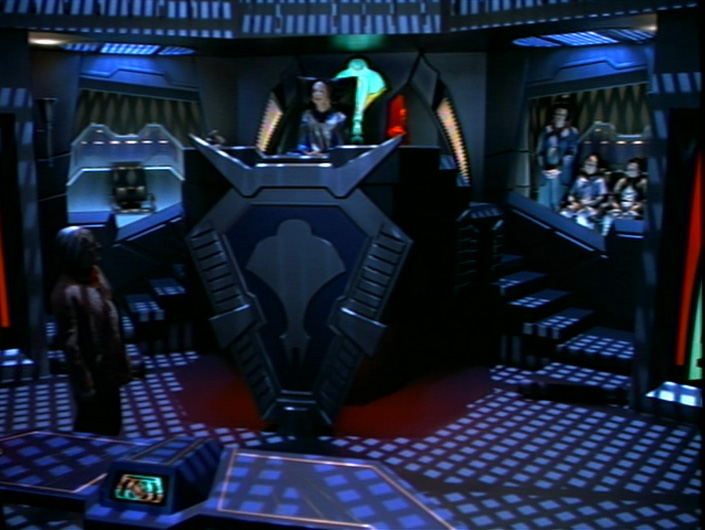
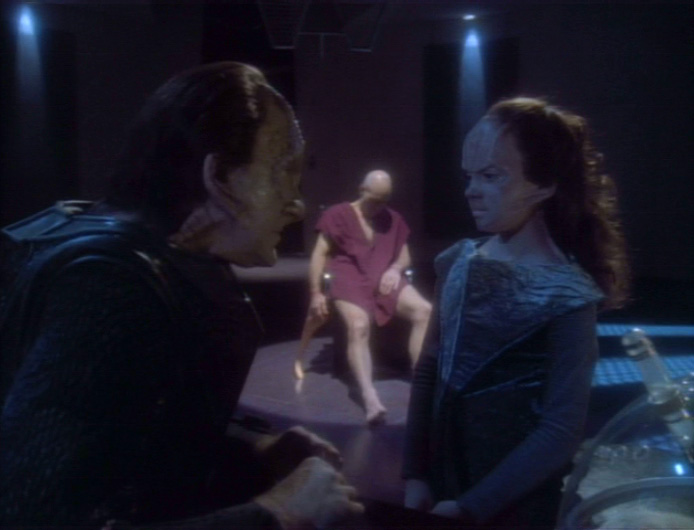

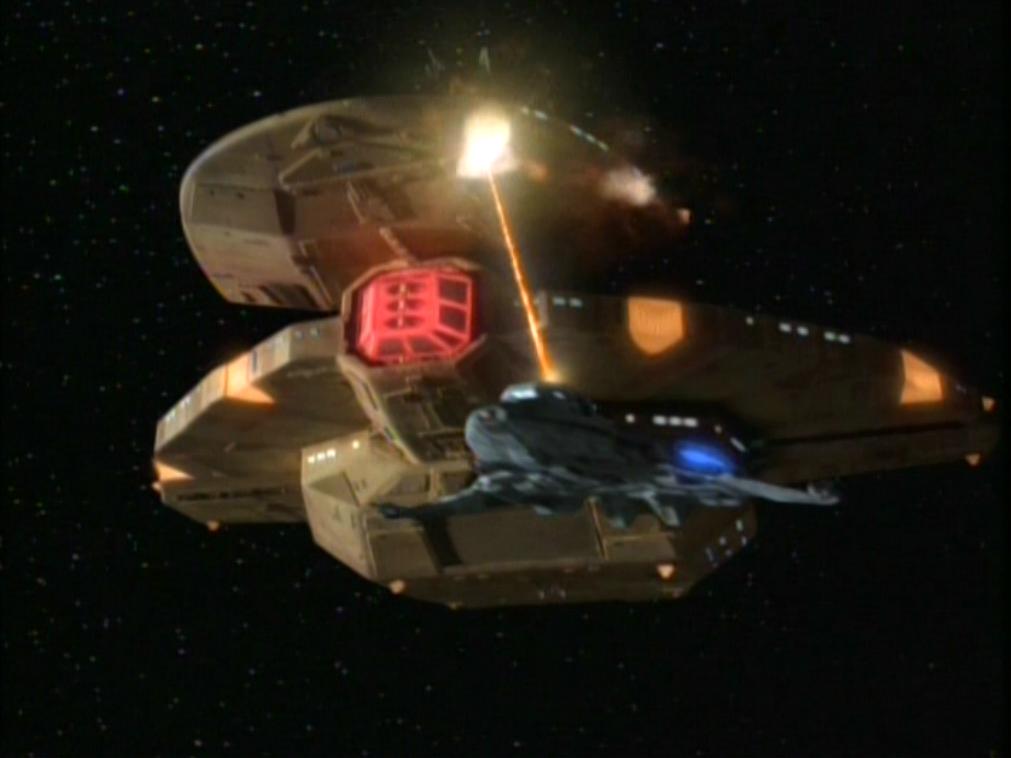


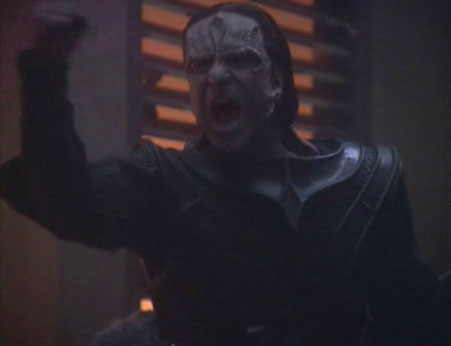
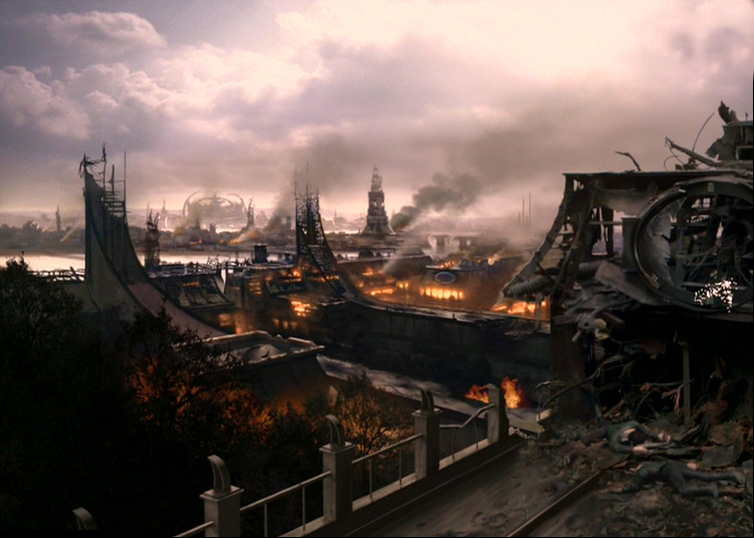
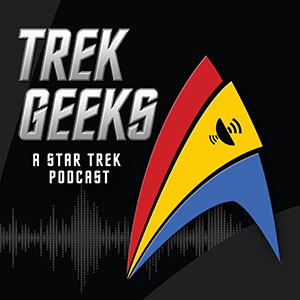






Felipe Franco
April 19, 2015 at 3:25 am
i Love this video
https://www.youtube.com/watch?v=_CHFtjXc5qo
I think all the fans we like the Cardassians, they were complex and with a great history.
I like books in the Cardassian Union at the end was rebuilt into a prosperous democratic state which has good relations with its vecionos and eventually joins the kithomer accords
Jeff O'Connor
April 25, 2015 at 6:27 am
What a beautiful article. Thank you so much for summing up just why I fell in love with the Cardassians. When I was a kid I’m sure most of this stuff flew over my head, but now as an adult whenever I rewatch DS9 I pick up on another layer of depth. It’s great to see it all compiled in a single place!
Ms. McCormack’s novels are indeed terrific continuations, too.
Will Nguyen
April 29, 2015 at 4:19 pm
Thank you so much for the kind words! Thanks for reading.
Adam Hirsch
April 29, 2015 at 1:13 am
“…define humanity, they also define the Cardassians ….a striking parallel to much of human history,” fun fact kardas(cardas) is the word for sibling in turkic languages
Harry Hollins
April 13, 2016 at 1:28 pm
My favorite species. Well written, you understand them well.
Christopher Dalton
November 22, 2016 at 11:00 am
Never liked the Cardassians and I never will. They got what they deserved in the end. The downfall of their entire race and their society ruined.
A clear message of where the state of humanity is going if it does not straighten its act out and for the better.
Jovet
November 25, 2016 at 11:29 pm
They also goes along with the deterioration of the temperament of Star Trek which Mr. Roddenberry himself created and enforced while he was alive. After his passing, the canon of Star Trek deteriorated away from his nearly-ideal utopia and a goal to strive for and turned into the cliché and proverbial lion’s den where peace and utopia and righteousness are mere plot pawns. Star Trek is dead.
Winnie the GRIZZ
May 31, 2017 at 11:00 pm
While the Federation was presented as a Utopian society, there were others that were still a dystopia allegory. The first episode I can think of is the white blacks vs. the black whites eventually killing each other TOS. That is also part of what made Star Trek good science fiction. Aren’t the Romulans also a xenophobic echo of the Roman empire, and the Ferengi unrestrained capitalism, etc.etc.?The Cardassian story arc was much longer than one episode, and the Enterprise/Voyager couldn’t waltz away from the problem (which was never resolved or even returned to except for Kahn in Star Trek 2). Watching through DS9 again, I see myself watching Bajor, the Federation, the Klingons, the Cardassians, and even the Romulans striving to achieve their nearly-ideal utopia. Maybe this is a better Star Trek than Captain Kirk taking a heavy battleship into the heart of the Dominion and using his libido on a Changeling woman in a bikini to solve the problem. End of episode; now onto romancing the Borg queen.
Winnie the GRIZZ
May 31, 2017 at 11:15 pm
Mrs. Grizz here (AKA Free the Birds)
Recently, it occurred to me that all of the worst Star Trek enemies have something in common: they are all, to some degree, Statists. The Borg and the Founders were the ultimate Collectivists. The Klingons, Cardassians, and Romulans were all large empires ruled by a very small ruling class. Average citizens are not given much, if any, say in the governance of their respective empires. This goes against the American ideal of individualism and self-government. Gene Roddenberry’s vision of the future was very much like this, and even the Prime Directive allowed cultures not in the Federation to be self-governing, rather than imposing our culture, ideals, religion, economic and political system on them.
Joe
August 22, 2019 at 8:31 pm
So they made a more “three-dimensional” race of aliens by basically just making them NAZIS? Great writing guys.
Simon Foston
August 22, 2019 at 8:31 pm
Excellent article. It makes me want a lot more Cardassian stories in Star Trek.